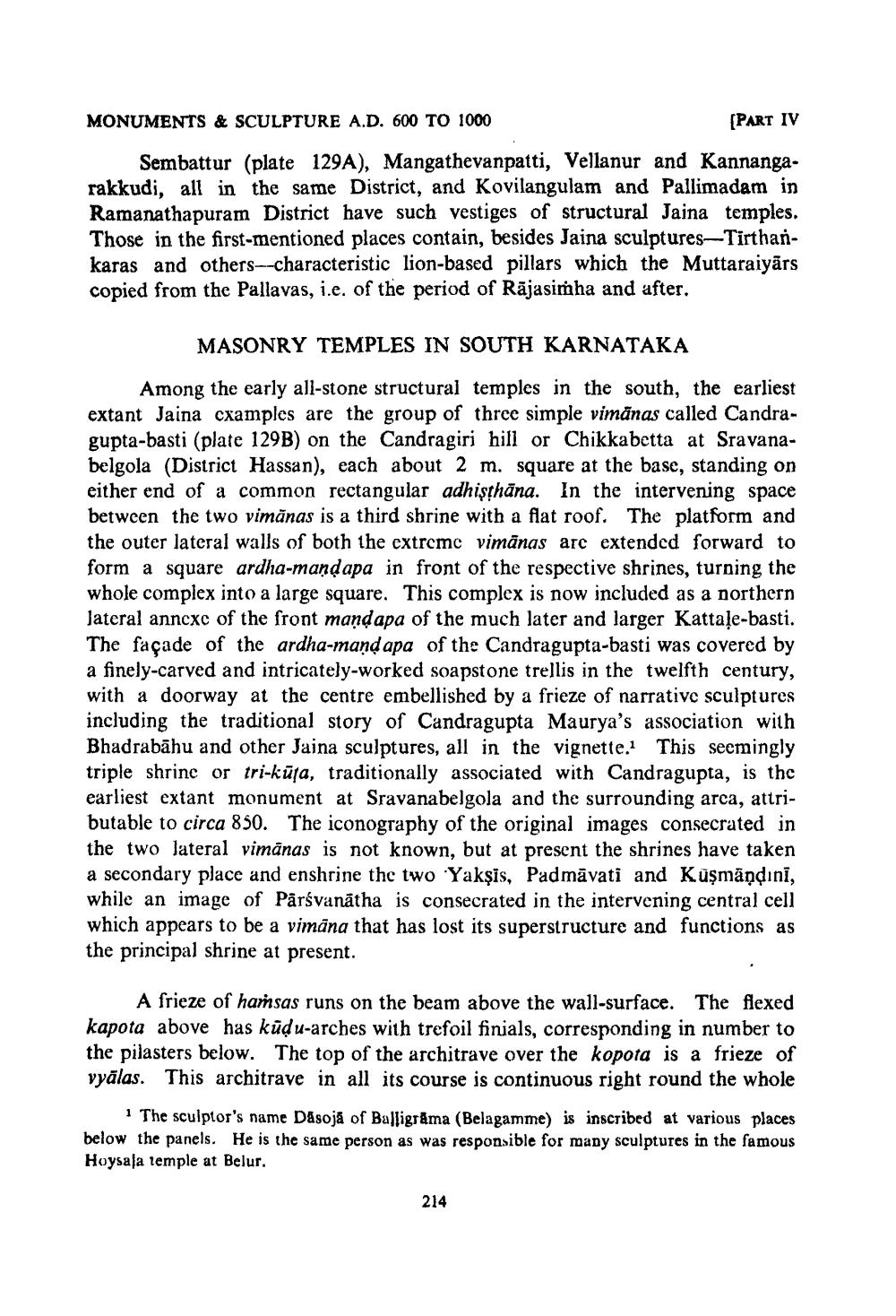________________
ENTS & SCULPTURE A.D. 600 TO 1000
(PART IV
Sembattur (plate 129A), Mangathevanpatti, Vellanur and Kannanga. rakkudi, all in the same District, and Kovilangulam and Pallimadam in Ramanathapuram District have such vestiges of structural Jaina temples. Those in the first-mentioned places contain, besides Jaina sculptures-Tirthankaras and others--characteristic lion-based pillars which the Muttaraiyārs copied from the Pallavas, i.e. of the period of Rājasimha and after.
MASONRY TEMPLES IN SOUTH KARNATAKA
Among the early all-stone structural temples in the south, the earliest extant Jaina cxamples are the group of three simple vimānas called Candragupta-basti (plate 129B) on the Candragiri hill or Chikkabetta at Sravanabelgola (District Hassan), each about 2 m. square at the base, standing on either end of a common rectangular adhişthāna. In the intervening space between the two vimănas is a third shrine with a flat roof. The platform and the outer lateral walls of both the extreme vimānas are extended forward to form a square ardha-mand apa in front of the respective shrines, turning the whole complex into a large square. This complex is now included as a northern lateral anncxc of the front mandapa of the much later and larger Kattale-basti. The facade of the ardha-mand apa of the Candragupta-basti was covered by a finely-carved and intricately-worked soapstone trellis in the twelfth century, with a doorway at the centre embellished by a frieze of narrative sculptures including the traditional story of Candragupta Maurya's association with Bhadrabāhu and other Jaina sculptures, all in the vignette. This seemingly triple shrine or tri-kūta, traditionally associated with Candragupta, is the earliest extant monument at Sravanabelgola and the surrounding area, attributable to circa 850. The iconography of the original images consecrated in the two lateral vimănas is not known, but at present the shrines have taken a secondary place and enshrine the two Yakşis, Padmāvati and Kuşmāņdini, while an image of Pārsvanātha is consecrated in the intervening central cell which appears to be a vimāna that has lost its superstructure and functions as the principal shrine at present.
A frieze of harsas runs on the beam above the wall-surface. The flexed kapota above has kūdu-arches with trefoil finials, corresponding in number to the pilasters below. The top of the architrave over the kopota is a frieze of vyālas. This architrave in all its course is continuous right round the whole
1 The sculptor's name Dasojā of Balligrama (Belagamme) is inscribed at various places below the panels. He is the same person as was responsible for many sculptures in the famous Hoysala temple at Belur.
214




